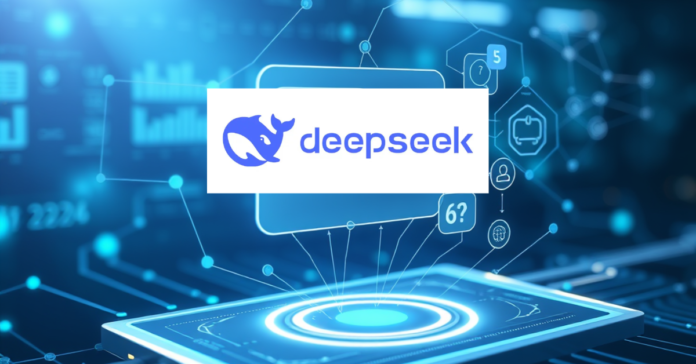Did you check out DeepSeek yet? Launched on January 20, the new artificial intelligence program became the most downloaded free app in the world within days. More than 22 million people used it to chat, help with spelling and writing, computing tasks, etc. These bots are tools based on a form of AI called a large language model. New AI bots come onto the scene regularly. Some of the familiar names are ChatGPT, Grok, Claude, and Gemini, but they can do similar things. But what was special about DeepSeek? It was comparable in performance to the best of its peers. It takes less energy, explains Vijay Gadepally. A lot less. “We just did a lot of thinking to make it more energy-efficient. It’s better for the environment per unit of work,” he states.
Gadepally is a computer scientist at Lincoln Laboratory of the Massachusetts Institute of Technology in Lexington. At Lincoln, he is focused on improving the efficiency of both AI models and the computers running them. He did not work on developing DeepSeek. AI models are known for consuming vast amounts of power. But the team who built the DeepSeek bot had clever ideas to decrease the energy burden associated with the building and operating of AI models, Gadepally says, calling it “very novel.” The team was from a company in Hangzhou, China. They announced their approach was energy saving on arXiv on December 27 of last year. A month later, the company, which is also strangely called DeepSeek, rolled out a new bot based on a leaner AI model. People are now calling the new bot DeepSeek. But its formal name is DeepSeek-R1. It can respond to things like a typical chat bot. It is actually a new kind of bot, called a reasoning agent.
Less conversation and more task execution
A chatbot typically address one question at a time, while a reasoning agent can perform a different type of operations, as Gadepally explains: “take a complex task and break it down to smaller pieces”.An initial question or request is sent into the underlying AI model to produce an answer, but that is only one piece of the puzzle.Once an answer is generated, the reasoning agent does not stop. It utilizes that initial answer to prompt itself to generate additional questions. This is fairly similar to how human beings evaluate and perform a task.Researchers refer to this process as a chain-of-thought.
Depending on the complexity of the task, the process takes seconds, or up to a half hour, during which time questions and answers are “bouncing around inside the model” (Gadepally).Reasoning agents are most effective when used in conjunction with search engines, robots, and other kinds of technology. When this occurs, questions and answers are “bouncing in & out of the processes,” too, and the reasoning agent serves a function equivalent to a human brain directing the tools. The entire system then “acts on your behalf and actually performs some activity” (Gadepally).
OpenAI, the creator of ChatGPT, has produced AI models, which support such systems. Their first model was o1. This model (or newer versions) supports multiple agents, one of which is referred to as Operator; it has access to a web browser, allowing you to perform task similar to booking appointments. Another named agent is Deep Research, which utilizes search engines; it is able to conduct research to collect relevant information and output a custom report.The newsletter, Understanding AI, had 19 people to try the Deep Research agent, of which seven said the tool accomplished work that was comparable to a professional in their field.
Having stated that, OpenAI has a subscription plan at $200 per month to use this agent. Additionally, to use the model o1 directly incurs a cost of $60/base million words of output (0.0000060 cents per word) .When DeepSeek-R1 came to the market, it could also do the same types of tasks that other agents on top of the o1 model could. The key difference between DeepSeek’s model and agents built on the o1 model, is that DeepSeek’s model is significantly more efficient. The cost of usage was just $2.19/base million words as compared with OpenAI’s agent that would come out to include a monthly subscription of $200 and then taking $60 for every number of million words the output.
This surprised many experts. “I think I can get way more intelligence [for the same amount of computing power],” says Jeremie Harris on his podcast, Last Week in AI. “That’s the DeepSeek story.” “It’s great,” he continues. “This is the real deal.” (In addition to hosting this podcast, Harris runs Gladstone AI, a company based in Washington, D.C.) Another of DeepSeek’s benefits: Its creator has shared how it made the reasoning agent and the model that drives it. Technology people call this open-source technology. OpenAI, the developer of ChatGPT, has done the opposite, keeping technical details of its bot and platform secretive. “Open-source tools give you the benefit of looking under the hood and seeing what’s going on,” says Avijit Ghosh, an expert in AI ethics for the company Hugging Face, which has a platform for open-source development in AI and is based in Boston, Mass. Now anyone can create their own version of DeepSeek. Some have already. The AI company Perplexity launched a free Deep Research tool in February, which is built from a modified version of DeepSeek-R1.
The future of “thinking” AIAI businesses frequently refer to their reasoning agents as “thinking” machines. This can raise expectations and be misleading. Likewise, these agents perform astonishing capabilities. But they are not working in the way that our brains operate. They are developed using the same kind of AI models as chatbots, which means that they can have similar limitations.For example, they can generate biased outputs, people can jailbreak the AI against safety guardrails, and the bots can produce incorrect information with confidence, also known as hallucinating.When the agent operates independently, there are tons of small problems that compound into larger issues, Ghosh notes. And that is a concern for him.
In February, he co-authored a paper on arXiv that sums it up: “Fully autonomous AI agents shouldn’t be created.” “Fully autonomous,” Ghosh explains, means performing completely on its own. Science News Explores reached out to DeepSeek to speak to someone at the company, but they did not respond. DeepSeek-R1 and similar types of bots are not fully autonomous – yet. They can do more complex tasks than chatbots. But, a real person is still part of the process. And that is an important thing to Ghosh. “I don’t think [these systems] are nearly as reliable and as accountable as humans,” he says.But, things are going fast. Robotic company Figure AI announced, in late February, a new AI model called Helix. Helix makes job using a robot better at reasoning.


